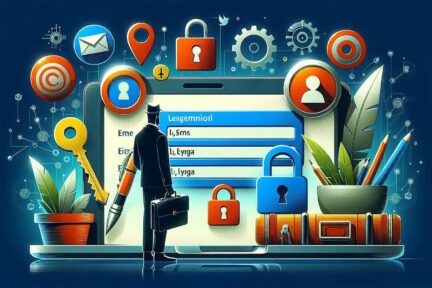Even if you and your team are working from home, you still need meetings to keep the business moving. However, meetings—both in-person and virtual can too often be unproductive. As all meetings move remote, it’s more important than ever to keep them engaging and productive. Microsoft can show you how. This virtual class from a Microsoft training specialist covers tips to make the most of your Microsoft Teams meetings from beginning to end.
Effective meetings are a cornerstone of communication and collaboration within any organisation. However, the traditional approach to meetings has often been criticised for being time-consuming, unproductive, and sometimes counterproductive. Microsoft Teams addresses these challenges by providing robust features enabling organisations to run meetings more efficiently and productively. Here’s how Microsoft Teams can help you run effective meetings:
1. Seamless Scheduling and Integration:
Microsoft Teams seamlessly integrates with Microsoft Outlook and other popular calendar applications, making scheduling meetings a breeze. Users can easily create and send meeting invitations, set agendas, and allocate time slots, all within the familiar interface of their preferred calendar tool. This integration ensures that meetings are well-organised and participants receive timely notifications and reminders.
2. Virtual Meeting Rooms:
Teams offer virtual meeting rooms where participants can join from anywhere, eliminating the need for physical presence. Whether team members work remotely or are spread across different office locations, everyone can connect to the meeting through video or audio, fostering a sense of inclusivity and collaboration.
3. Video Conferencing and Screen Sharing:
Video conferencing is a powerful feature of Microsoft Teams, allowing participants to see each other and engage in more meaningful interactions. Video enhances communication by enabling non-verbal cues and expressions crucial for effective discussions. Teams also facilitate screen sharing, making it easy to present slides, share documents, and demonstrate ideas during the meeting, enhancing visual engagement and understanding.
4. Meeting Recording and Transcription:
Microsoft Teams enables you to record meetings, ensuring that important discussions are captured for future reference or for those who couldn’t attend in real time. Additionally, the platform offers real-time transcription during meetings, generating a written conversation record. This feature not only aids accessibility but also helps participants focus on the discussion rather than extensive note-taking.
5. Collaboration during Meetings:
Teams transform meetings into interactive collaboration sessions. Participants can co-edit documents, brainstorm on virtual whiteboards, and engage in real-time discussions through chat and video. This dynamic collaboration ensures that meetings are passive information-sharing sessions and active forums for problem-solving and decision-making.
6. Post-Meeting Follow-up:
After the meeting concludes, Teams offers tools for efficient post-meeting follow-up. Meeting recordings, transcripts, and shared documents remain accessible to all participants, allowing them to review and reinforce key takeaways. Tasks and action items can be assigned, tracked, and managed within the Teams environment, ensuring that decisions made during the meeting are translated into actionable steps.
7. Integration with Apps and Services:
Microsoft Teams can be integrated with a wide range of apps and services, further enhancing the effectiveness of meetings. Whether it’s polling for quick feedback, integrating project management tools, or incorporating third-party apps, Teams can be customised to suit the unique needs of each meeting and team.
In summary, Microsoft Teams revolutionises how meetings are conducted by providing a comprehensive platform that streamlines scheduling, enhances communication, fosters collaboration, and facilitates effective follow-up. By leveraging the features and capabilities of Teams, organisations can transform meetings from routine obligations into powerful drivers of productivity and innovation.
You need the best IT support in London. Technology is complicated and expensive. It’s so hard to maintain everything and know what to do when something breaks or goes wrong. IT problems can put a damper on your day. They’re frustrating, time-consuming, and seem like a never-ending cycle of issues.
Penntech’s average NPS score over 90 days is 84. The average Net Promoter Score (NPS) for IT Managed Service Providers (MSPs) can vary. Still, an NPS of around 50 is considered excellent in this industry, with scores above 70 exceptional and rare.
We offer our services on a trial basis for the first three months because we’re confident in our delivery and approach.
Penntech offers a wide range of IT services, from strategic project management to 24/7 remote support, ensuring all your IT needs are always covered.
We provide advanced cybersecurity measures and expertise, including penetration testing services and Cyber Essentials, to protect clients from cyber threats.
We offer Clients the ability to scale IT services up or down based on their needs. This flexibility is crucial for businesses that experience seasonal changes or rapid growth.
Other providers often enforce their preferred IT stack, but we don’t, as IT is not a one-size-fits-all solution.
We ensure our Clients’ business continuity through robust disaster recovery and backup solutions.
With experience in various verticals and industries, Penntech understands different businesses’ unique IT challenges and can provide customised solutions..
Contact us today or explore the range of support packages on offer.


Business owners often have to wear many hats, from handling HR and marketing tasks to managing the finances. One task…

Cool Windows 11 Features That May Make You Love This OS
Microsoft released the Windows 11 operating system (OS) over a year ago. It was well-received mainly with reviews as stable…

6 Ways to Prevent Misconfiguration (the Main Cause of Cloud Breaches)
Misconfiguration of cloud solutions is often overlooked when companies plan cybersecurity strategies. Cloud apps are typically quick and easy to…

4 Proven Ways to Mitigate the Costs of a Data Breach
No business wants to suffer a data breach, but unfortunately, it’s difficult to avoid them in today’s environment. Approximately 83%…

The benefits of AI include advancing our technology, improving business operations, and much more. Adoption of AI has more than doubled…

Leading Password Managers for Personal and Business
We hope that your business is already considering a password manager system, but there’s still the matter of finding the…

What’s Changing in the Cybersecurity Insurance Market?
Cybersecurity insurance is still a pretty new concept for many SMBs. It was initially introduced in the 1990s to provide coverage for large enterprises. It covered things like data processing errors and online media.

What are the advantages of implementing Conditional Access?
It seems that nearly as long as passwords have been around, they’ve been a major source of security concern. Eighty-one…

Cybersecurity Review 2023: Top Threats and Trends
As we delve into 2023, the cybersecurity landscape has never been more dynamic and crucial to our digital lives. From…

Essential Cybersecurity Tips to Safeguard Your Digital
In today’s hyper-connected world, protecting your digital life is more crucial than ever. With cyber threats lurking around every corner,…

Cybersecurity Guidelines: Must-Know Tips!
In an increasingly digital world, protecting your online presence is more critical than ever. Cybersecurity breaches are no longer just…

Cybersecurity Steps to Secure Your Data
In today’s digital age, protecting your data is more critical than ever. Cyber threats are constantly evolving, and it’s crucial…

Cybersecurity: Navigating Emerging Threats and Opportunities
In today’s digital age, cybersecurity has become a critical concern for businesses and individuals alike. As technology continues to evolve,…

How Service Cloud Transforms Customer Experience
In today’s competitive business landscape, delivering exceptional customer experiences is paramount. Service Cloud, a powerful customer service platform, has revolutionised…

A Comprehensive Guide to Cybersecurity Audits for Businesses
In today’s digital age, cybersecurity is of utmost importance for businesses. Cybersecurity audits play a crucial role in protecting sensitive…

IT Service Management for Modern Businesses
In today’s digital age, IT Service Management (ITSM) has become a cornerstone for modern businesses. As companies increasingly rely on…

Essential Skills Every Cybersecurity Engineer Must Master
In the ever-evolving field of cybersecurity, engineers must arm themselves with a diverse array of skills to defend against the…